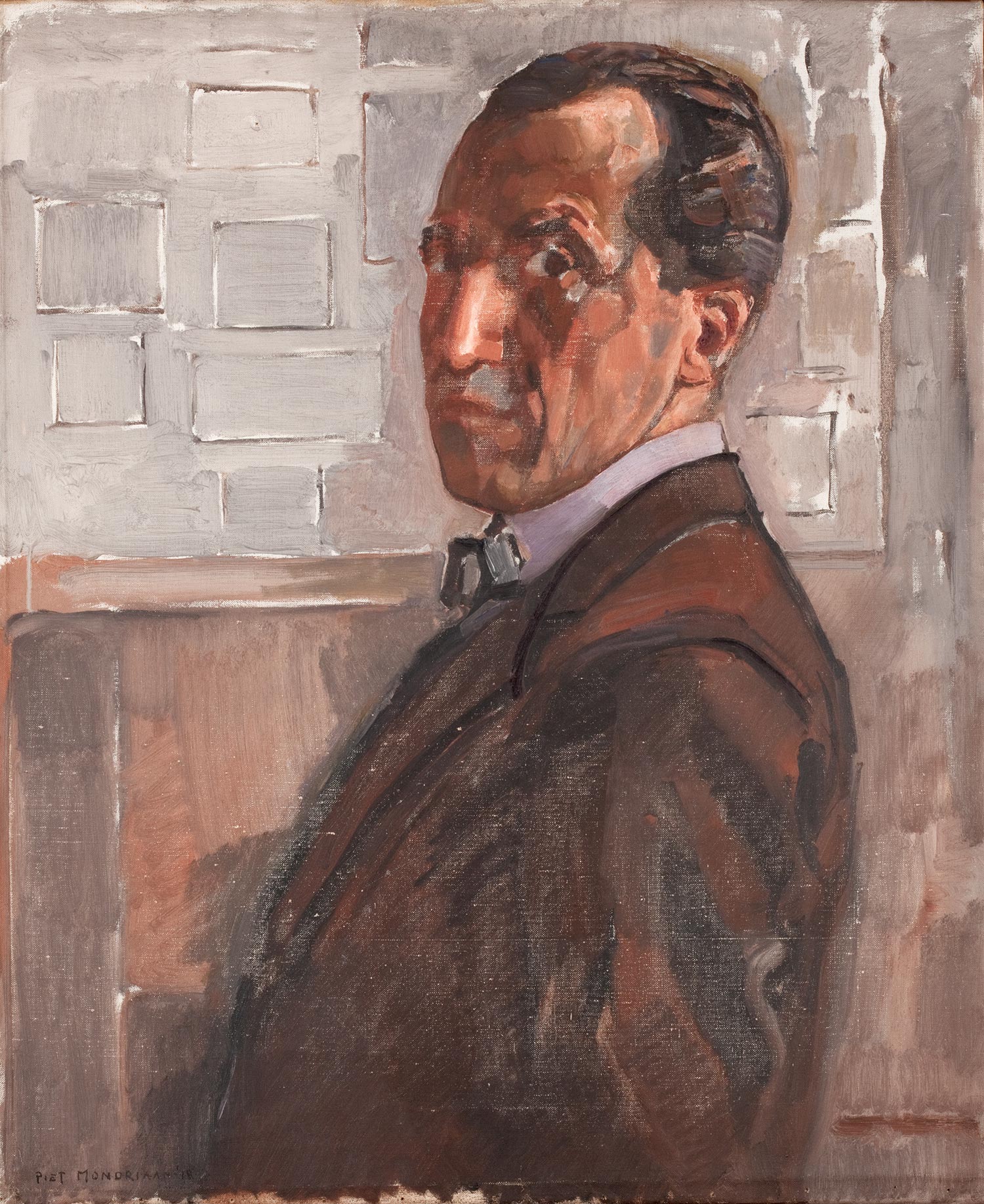Musée Marmottan Monet, opening in September 2019
A member of the De Stijl group, Piet
Mondrian is best known for his early, pared-down abstract paintings and
his squares of red, yellow and blue. In this unique exhibition at the
Musée Marmottan Monet, opening in September 2019, the emphasis is on his
figurative work.
Piet Mondrian, Devotie (Dévotion), 1908, Huile sur toile, 94 x 61 cm, © Kunstmuseum Den Haag
The figurative paintings by Piet Mondrian (1872–1944) have for a long time remained unknown to the public. However, the man who is now recognised as the most prominent collector of the artist’s work, Salomon Slijper (1884–1971), was passionately interested in this long forgotten part of his oeuvre. Having met the master in the Netherlands, where he fled during the First World War, Salomon Slijper, the son of a diamond dealer from Amsterdam, built up a unique collection of paintings and drawings by the artist, whom he befriended. Mondrian selected a series of works that were representative of his work produced between 1891 and 1918, enriching the ensemble with several abstract works executed later; most of the acquisitions were made between 1916 and 1920. Slijper gave the painter considerable financial support. Furthermore, he changed his life. At a time when Mondrian was not able to earn a living from his work and made copies in the Rijksmuseum to make ends meet, the many acquisitions of his new patron opened up new opportunities for him and enabled him to fund his return to Paris in June 1919.The destiny of Salomon Slijper’s collection is somewhat reminiscent of Michel Monet’s inheri-tance, which is one of the jewels in the Musée Marmottan Monet.
Like the Impressionist’s son, Slijper had no children. Like the latter, Slijper designated a museum—the Kunstmuseum in The Hague (formerly the Gemeentemuseum)—as his legatee. Like the Monet collection presented in the private mansion in Rue Louis Boilly, the Slijper collection is the world’s largest collection of Mondrians in the world. A museum whose permanent collections are made up of private donations and whose aim is to shed light on the role played by collectors in promoting the arts, the Musée Marmottan Monet has forged an exceptional partnership with the Kunstmuseum in The Hague in order to organise a completely unique exhibition that pays tribute to Slijper and Mondrian’s figurative works through a presentation of major paintings and drawings, originating exclusively from the collector’s collection.
From 12 September 2019 to 26 January 2020, around seventy Mondrians will grace the walls of the Parisian institution. The exhibition is distinguished by the number and quality of the canvases designated as masterpieces in the museum in The Hague. Half of the sixty-seven Mondrians presented in the exhibition are being transported to Paris for the first time. The other works are equally unknown: twelve per cent of them have not been presented in the city for half a century, and twenty per cent for nearly twenty years. Not seen in Paris for nearly a generation, the exhi-bition will be an event in itself. It is a unique event in more ways than one, as certain works are being transported for the last time due to their fragility. An example is the iconic Sunlit Mill (1908). The Marmottan exhibition thus offers visitors a final opportunity to discover the work in Paris before it definitively becomes a painting that cannot be moved.
Curatorship : Marianne Mathieu, Scientific Director of the Musée
The exhibition begins with Composition N° IV (1914). The first work acquired by Salomon Slijper, it is also one of the exceptions in the itinerary, as it is purely abstract. The acquisition of a recent painting was undoubtedly a prerequisite to win the artist’s trust. Mondrian was henceforth happy to sell his “naturalistic” canvases to Slijper, who quickly became his most faithful patron.
As a complement, Dead Hare, painted in 1891, highlights Mondrian’s links with the Dutch tradition in painting through the still life genre. The oldest work in the exhibition—the painter was only nineteen when he painted it—, it opens the itinerary that follows: the works are presented in chronological order and are largely figurative.
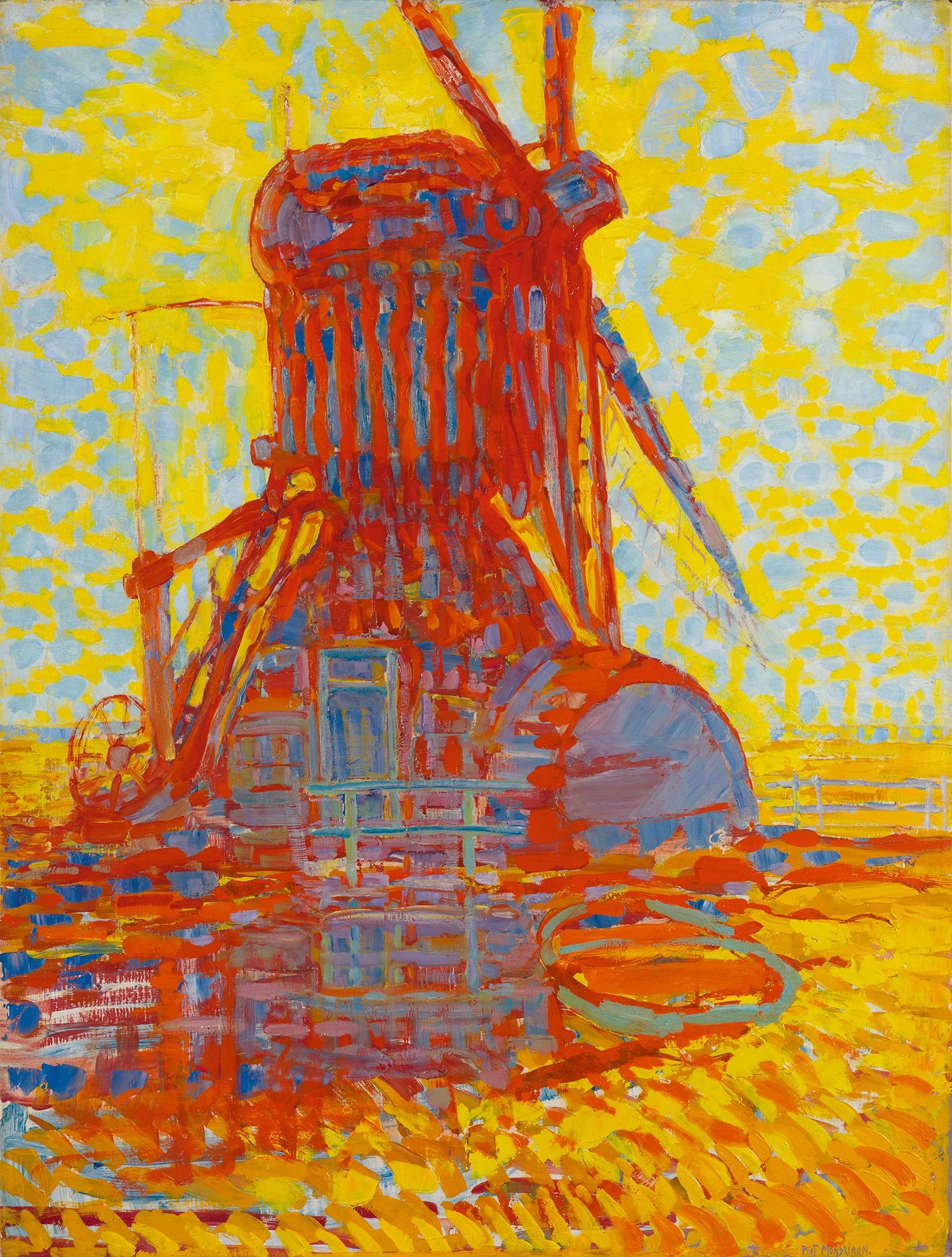
Piet Mondrian – Mill in sunlight, 1908 – © Kunstmuseum Den Haag
The first part contains landscapes painted between 1898 and 1905. This section comprises views of the Gooi area east of Amsterdam, where the artist and the patron stayed for a while and frequented one another. The works that portray places familiar to both men illustrate Mondrian’s precocious talent: an extraordinary draughtsman and a master of chiaroscuro. The selected themes and the attention paid to the rendering of the atmosphere link him to The Hague School. He was, at that point, a true heir to the masters of the classical tradition. Yet, the speed at which his work developed and its constant renewal were striking. Although the painter restricted himself to several themes—mills, trees, farms, flowers, and portraits—, none of the works are alike. Each work represented a further development. Hence, the exhibition itinerary is characterised by diversity, contrast, and surprise.In 1907, considering that “the colours of nature cannot be reproduced on canvas”, Mondrian adopted a modern approach that focused on flat areas of colour and coloured contrasts taken to an extreme. Mill in the Evening (1907–1908) explored—via registers with bold tones of yellow, blue, and green—the poetry of painting.
With Wood Near Oele (1908) the artist entered a new phase: curved lines, arabesques, and unreal colours convey a mystical quality.A member of the Theosophical Society, Mondrian represented himself as a visionary. Three previously unseen self-portraits depict him aged thirty-six, with long hair, a black beard, and the penetrating stare of a fervent spirit.Devotion (1908)—used for the exhibition’s poster—attests to the spiritual dimension of his work via the child’s portrait. Some of the master’s most famous works are placed opposite. Profoundly influenced by the example of the Fauves and the Diversionists, Mill in the Evening, Dunes, and Arum (1908–1909) were increasingly radiant and vibrant; two criteria that defined the beauty of a painting according to Mondrian.
Circa 1911, the spectacular pink church of Domburg (Church Tower of Domburg, 1911) and the monumental TheRed Mill (1911), standing out brightly against a deep blue ground, highlight the beauty of pure colours. The geometrisation of the shapes of the two monuments foreshadowed abstraction. At the same time, Mondrian reinterpreted the cubism of Braque and Picasso that inspired his ochre-grey palette, as evident in the works The Grey Tree (1911) and Landscape (1911).
Figuration and abstraction are also contrasted in the following section. Three exceptional large-format works that represent in oils and charcoal the Mill at Blaricum (1917), where Slijper lived, and the Farm at Duivendrecht (1916), which reused an early motif that can be seen in the first section, contrast with three purely abstract canvases dating from 1914.Concluding the itinerary, a self-portrait by Mondrian standing in front of an abstract chequer-board motif (1918) hangs opposite a work in the same genre: Chequerboard Composition with Dark Colours (1919), which Slijper purchased in the year it was executed. The works echo and contrast with one another: bright colours—reds and blues—were reserved exclusively for chequerboard paintings, while a camaieu of browns sufficed for the “naturalistic” representation of the painter in his studio.
As an epilogue, Composition, a neoplasticist painting executed in 1921, is complemented by six pictures of flowers created between 1918 and 1921, representing chrysanthemums, roses, and arums. The juxtaposition of these works attests to the fact that the developments in Mondrian’s œuvre were more complex than they first appear. His oeuvre cannot be defined as a direct transi-tion from figuration to abstraction or from black and white to colour. On the contrary, naturalism remained a constant in Mondrian’s work, raising him to the rank—which is an unknown and yet important fact—of a great master of twentieth-century figurative painting.
Piet Mondrian – Large Landscape circa 1907-1908 – Oil on canvas 75 x 120 cm – © Kunstmuseum Den Haag
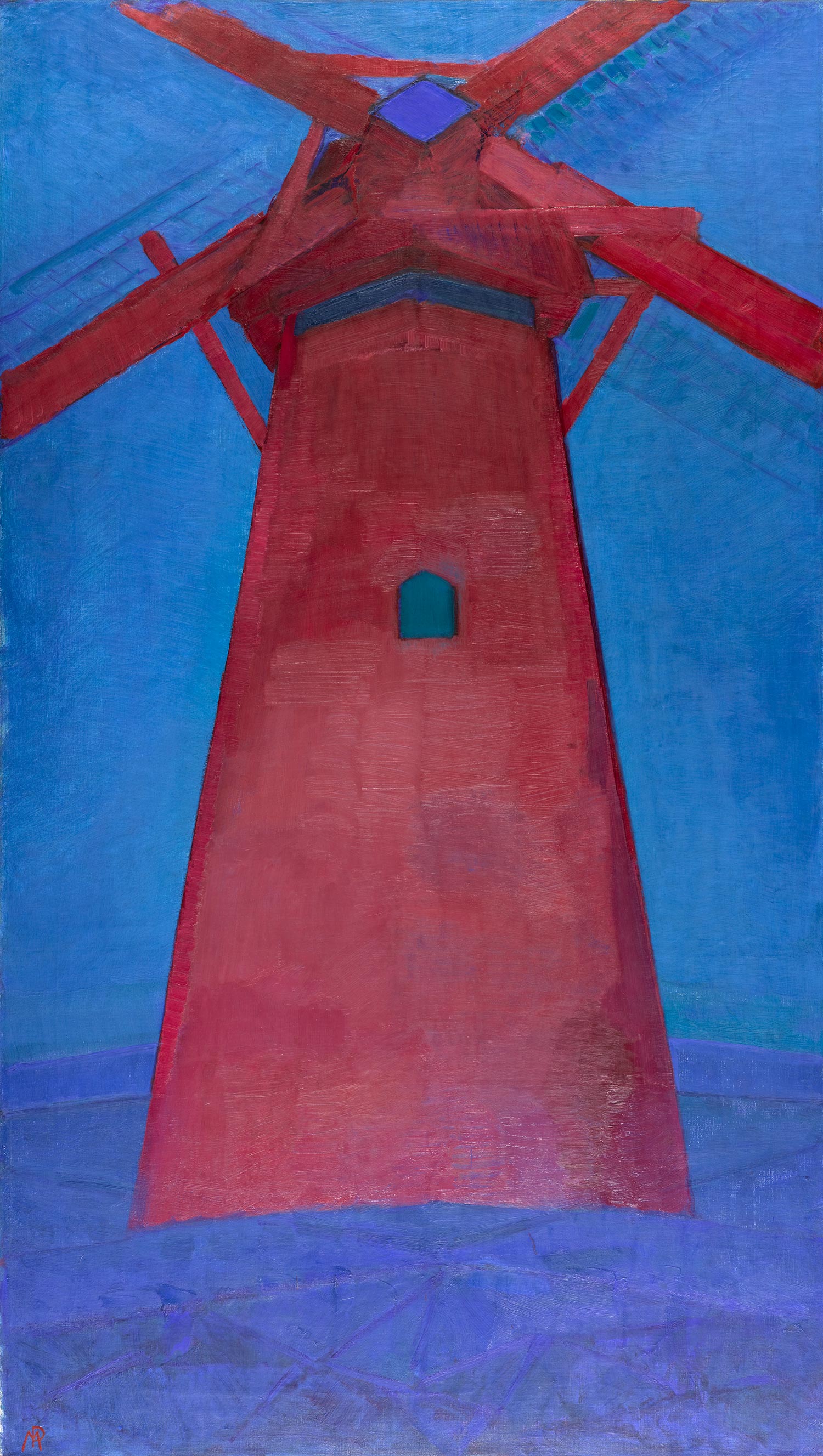
Piet Mondrian – The Red Mill 1911 – Oil on canvas – 150 x 86 cm © Kunstmuseum Den Haag
Piet Mondrian – House – 1898-1900 Watercolor, gouache and opaque white on paper 45,6 x 58,4 cm – © Kunstmuseum Den Haag
Piet Mondrian – Mill in sunlight1908 – Oil on canvas – 114 x 84 cm © Kunstmuseum Den Haag
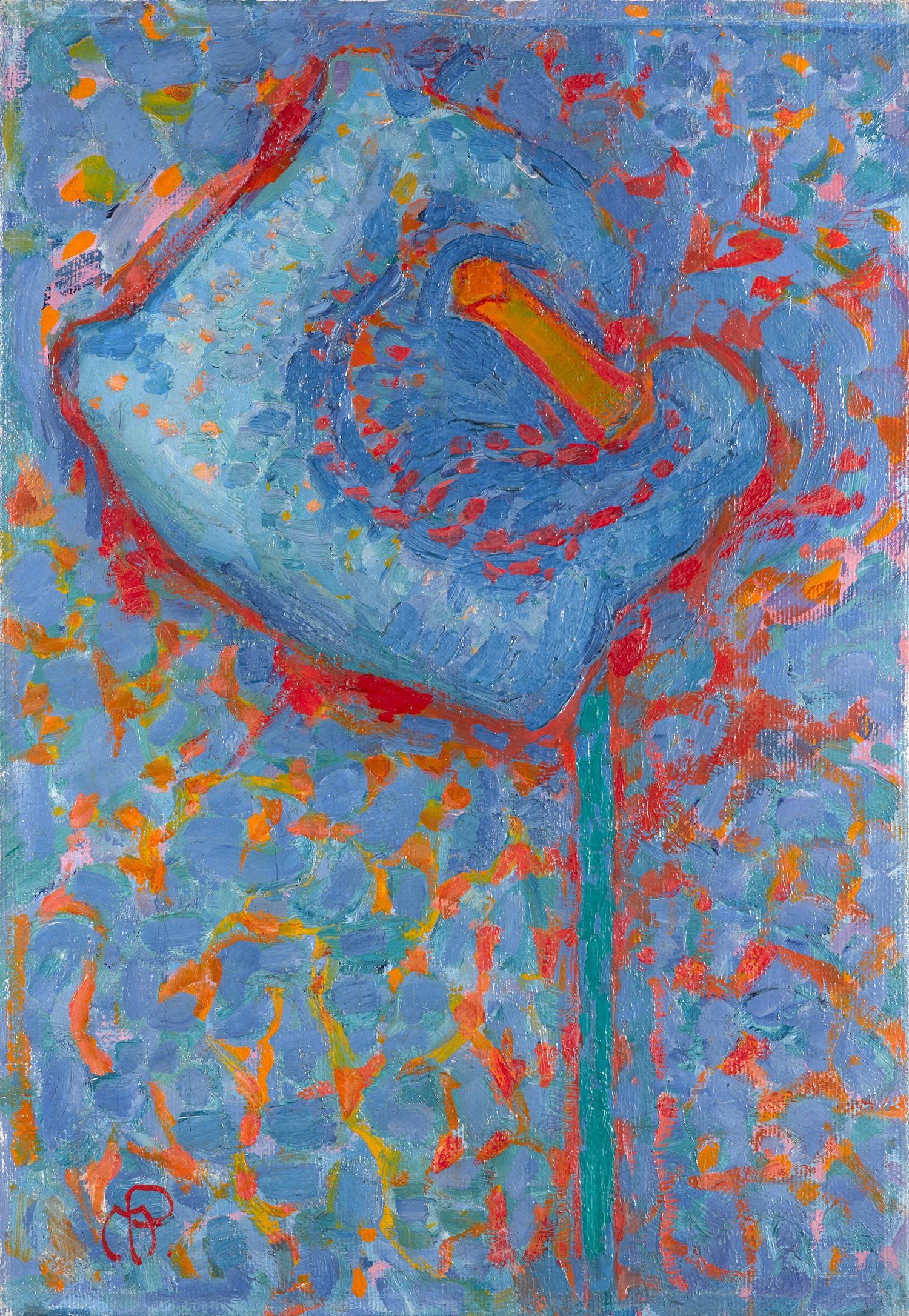
Piet Mondrian – Arum lily; Blue flower 1908-1909 – Oil on canvas – 46 x 32 cm © Kunstmuseum Den Haag
Piet Mondrian – Geinrust Farm in the hazecirca 1906-1907 – Oil on canvas – 32,5 x 42,5 cm © Kunstmuseum Den Haag
Piet Mondrian – Woods near Oele1908 – Oil on canvas – 128 x 158 cm © Kunstmuseum Den Haag
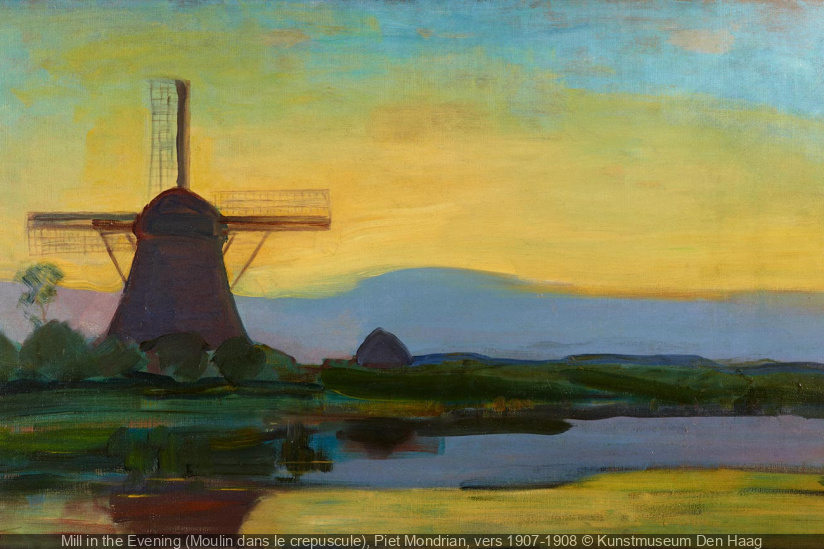
Piet Mondrian – Oostzijdse Mill in the Evening Circa 1907-1908 – Oil on canvas – 67,5 x 117,5 cm © Kunstmuseum Den Haag
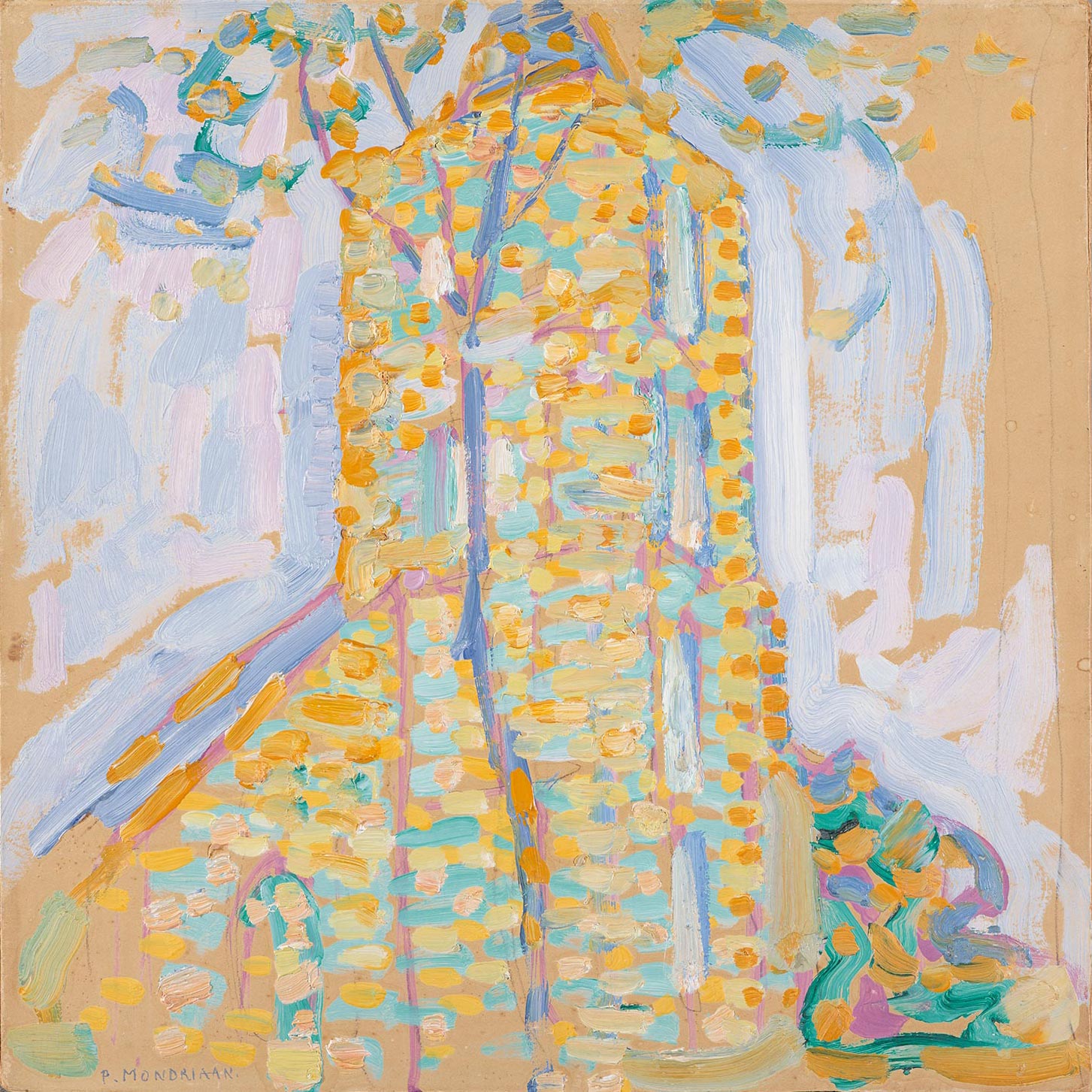
Piet Mondrian – Church at Domburg 1909 – Oil on cardboard – 36 x 36 cm © Kunstmuseum Den Haag
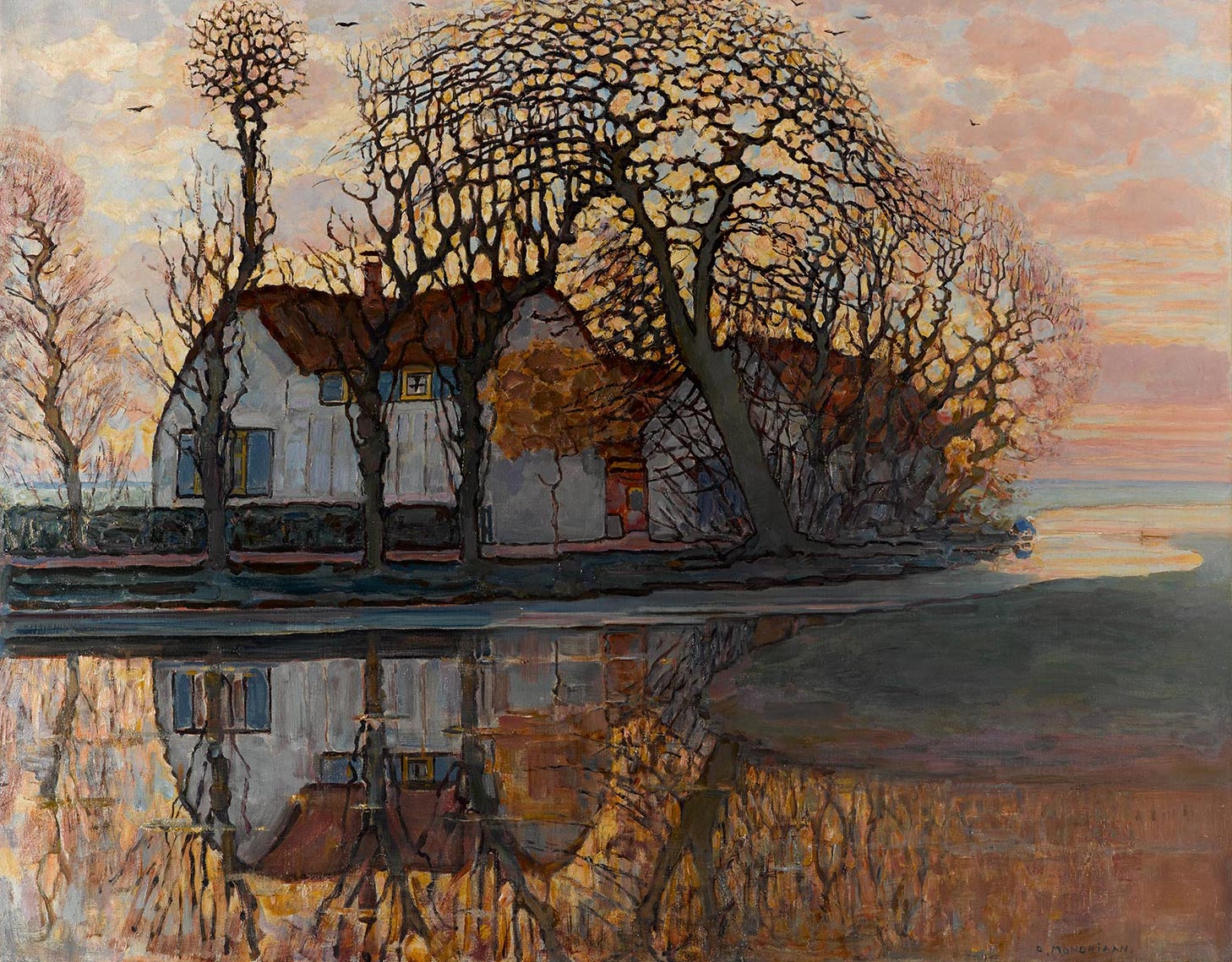
Piet Mondrian – Farm near Duivendrecht circa 1916 – Oil on canvas – 85,5 x 108,5 cm © Kunstmuseum Den Haag
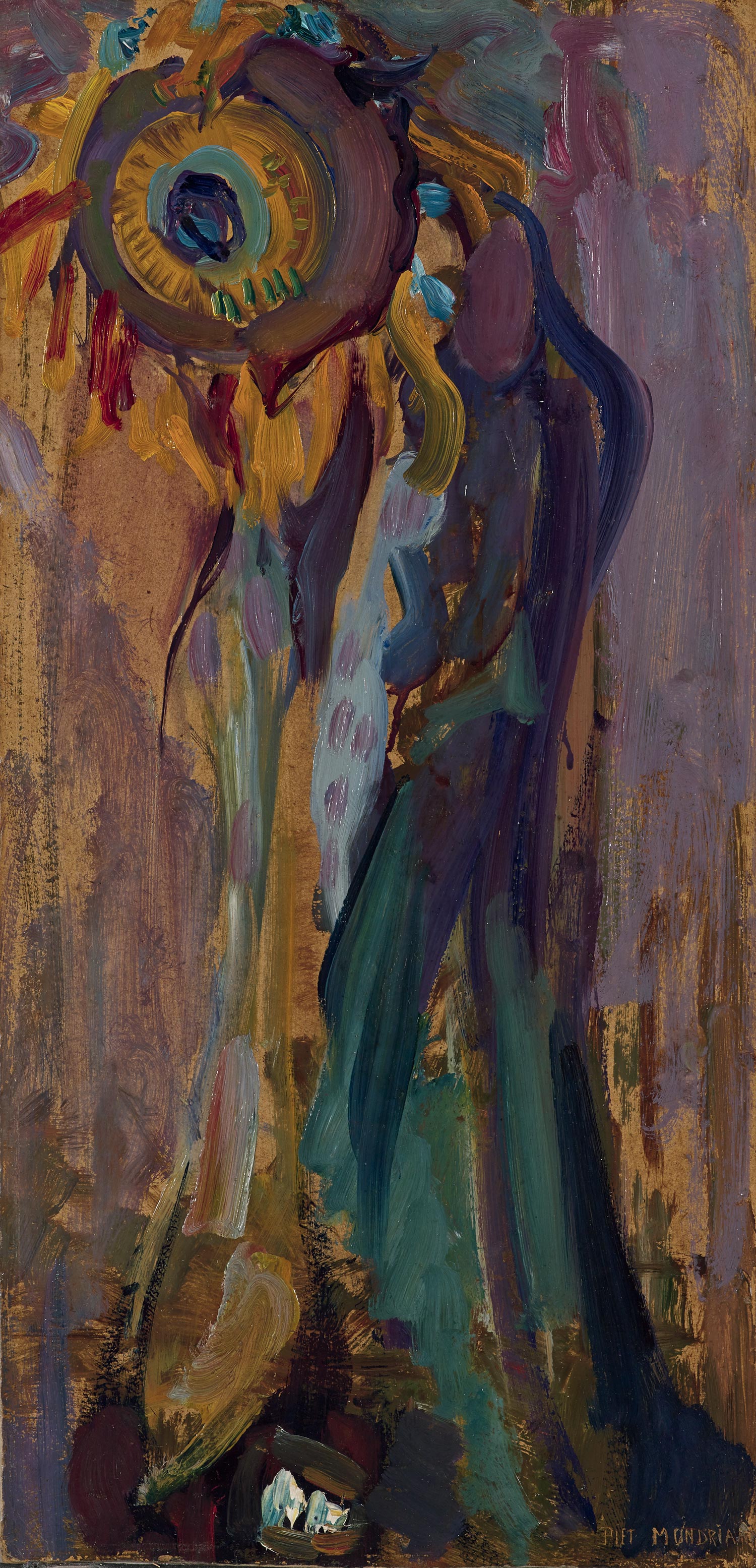
Piet Mondrian – Dying sunflower I 1908 – Oil on cardboard – 63 x 31 cm © Kunstmuseum Den Haag
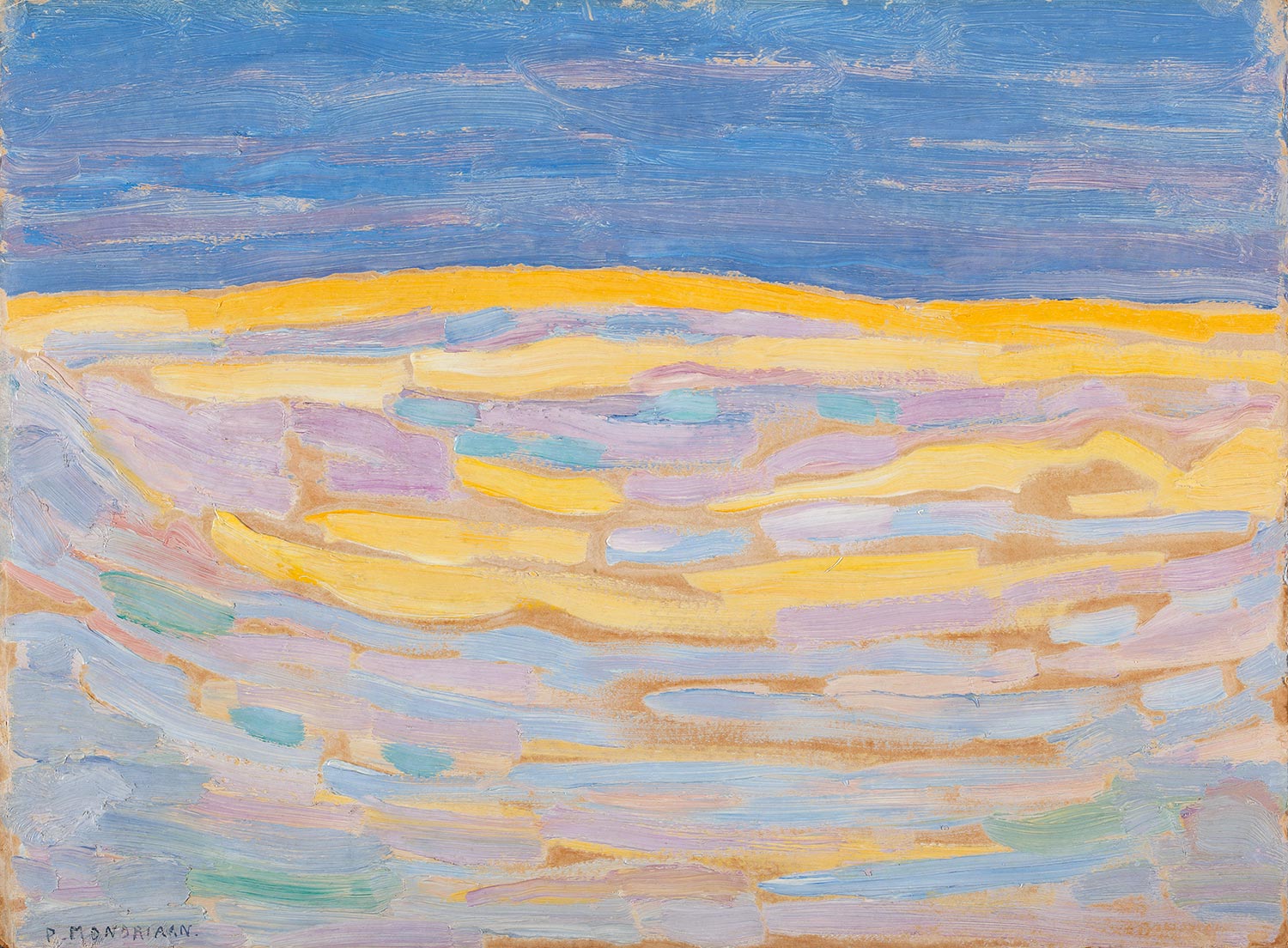
Piet Mondrian – Dune I 1909 – Oil on cardboard – 30 x 40 cm © Kunstmuseum Den Haag
Piet Mondrian – Rose in a glass Post 1921 – Watercolor and pencil 27,5 x 21,5 cm – © Kunstmuseum Den Haag
Piet MONDRIAN "Portrait d’une jeune fille", 1908 © Kunstmuseum Den Haag, The Hague, the Netherlands
Piet Mondrian – Portrait of a Girl – 1908 Oil on canvas on panel – 49 x 41,5 cm © Kunstmuseum Den Haag
Piet Mondrian – Zeeland Chuch Tower1911 – Oil on canvas 114 x 75 cm © Kunstmuseum Den Haag
